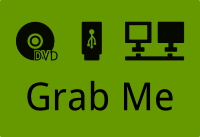Portal:12.1
Welkom op het portaal 12.1 edit
openSUSE 12.1 is op woensdag 16 november 2011 vrijgegeven. Als onze nieuwste uitgave, brengt dit de beste vrije software in het bekende openSUSE-pakket: stabiel en compleet. Deze uitgave biedt vele nieuwe verbeteringen uit het bureaublad naar de onderliggende infrastructuur en bevat ook de introductie van GNOME 3.2, ownCloud, Snapper en veel meer.
12.1 kan worden gedownload van software.opensuse.org en de 12.1 winkelversie zal beschikbaar zijn voor de verkoop via verschillende bronnen. De winkelversie is een versie van openSUSE met een complete gedrukte handleiding voor de eindgebruiker, installatiemedium, veel vouchers en meer.
Top features edit
openSUSE 12.1 brengt u opwaarderingen naar de nieuwste Vrije Software bureaublad- and servertechnologiën evnals unieke mogelijkheden, zoals het nieuwe hulpmiddel Snapper die u monitoring van wijzigingen in bestanden brengt en terugrolfunctionaliteit. Lees er over om een overzicht te krijgen van wat er nieuw is in openSUSE 12.1
| Dit artikel is nog maar gedeeltelijk vertaald. Als u mee wilt helpen met vertalen lees dan Wiki vertalen naar het Nederlands. |
Hulpbronnen edit
Uitgaven edit
- Rollende release
Tumbleweed - Gewone release
openSUSE Leap 15.5
Screenshots edit
Applications edit
In the nieuws edit
